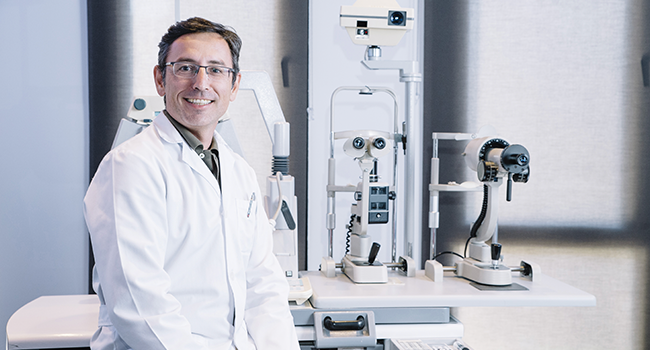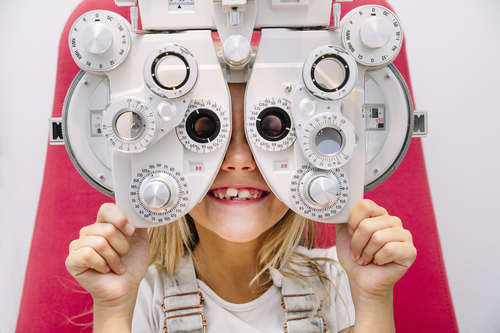Locate a Trusted Optometrist Chino for Family Eye Treatment Solutions
Locate a Trusted Optometrist Chino for Family Eye Treatment Solutions
Blog Article
Discovering the current Technical Improvements in Optometry and What They Mean for Optometrists
In the ever-evolving field of optometry, current technological improvements are reshaping just how specialists approach eye care. From the accuracy of Optical Coherence Tomography to the nuanced understandings used by AI-driven diagnostic tools, these innovations are establishing new requirements in patient analysis and treatment. Teleoptometry is poised to redefine accessibility, making sure that know-how transcends geographical constraints. As these improvements permeate the method, optometrists are confronted with the challenge of accepting these devices to enhance client outcomes. The inquiry continues to be: exactly how will these technological shifts redefine the roles and duties within the profession?
Innovations in Diagnostic Tools
Advancing the area of optometry, innovations in analysis devices have actually revolutionized the method eye treatment experts assess and detect eye problems and visual problems. The previous decade has actually seen significant technological developments, allowing even more precise and thorough examinations. Optical Coherence Tomography (OCT), for instance, gives high-resolution cross-sectional pictures of the retina, enabling for the early detection of illness such as glaucoma and age-related macular degeneration. This non-invasive imaging strategy has actually ended up being important in modern optometric technique.
Another trick innovation is the introduction of advanced corneal topography systems, which map the surface area curvature of the cornea with precision. These tools are specifically helpful for fitting call lenses and diagnosing corneal problems. Furthermore, electronic retinal imaging has actually transformed traditional ophthalmoscopy, supplying comprehensive, scenic sights of the retina that assist in extensive visual assessments.
The growth of wavefront aberrometry has likewise been vital, making it possible for the evaluation of refractive errors with unequaled accuracy (Eye Doctor). This technology assists in tailoring restorative lenses and improving surgical outcomes for refractive surgeries. Collectively, these analysis improvements equip eye doctors to deliver remarkable patient care, making sure very early treatment and customized therapy approaches, eventually boosting aesthetic wellness results
AI in Individual Monitoring
Structure on the foundation of cutting-edge analysis devices, the unification of expert system (AI) in client administration stands for a transformative leap for optometry. AI systems are increasingly utilized to enhance effectiveness, accuracy, and personalization in patient care. By analyzing huge amounts of data, AI can identify patterns and predict prospective ocular problems, making it possible for optometrists to customize interventions a lot more effectively. This capacity is important in managing chronic eye illness such as glaucoma and diabetic retinopathy, where very early detection and continual tracking are essential.
Additionally, AI-driven systems promote structured client communications and management procedures. Automated organizing, digital appointments, and individualized follow-up strategies not only enhance client fulfillment yet also maximize time management for specialists. These systems can triage clients based on the seriousness of their conditions, guaranteeing that those in essential need get punctual focus.
Moreover, AI enhances decision-making by supplying eye doctors with evidence-based referrals and treatment paths. By integrating data from electronic wellness records, AI tools supply understandings that notify scientific decisions, minimizing the threat of errors and enhancing patient outcomes. As AI continues to develop, its role in individual management will likely increase, improving the landscape of optometric treatment.
Advances in Retinal Imaging
In the realm of optometry, retinal imaging has seen exceptional technical developments that are enhancing diagnostic abilities and client care. Technologies such as Optical Comprehensibility Tomography (OCT) and fundus photography have transformed how eye doctors analyze the retina and picture. OCT, particularly, offers high-resolution, cross-sectional pictures of the retina, permitting for the detailed evaluation of its layers. This dig this capability is important for early detection and management of problems like glaucoma, diabetic person retinopathy, and age-related macular degeneration.
Enhanced imaging modalities like OCT angiography are additional refining diagnostic accuracy. This non-invasive method maps blood circulation in the retina, providing vital insights into vascular wellness without the demand for dye injections. In addition, adaptive optics modern technology is being integrated right into retinal imaging systems to remedy ocular aberrations, supplying unmatched photo quality. Such innovations assist in the recognition of minute retinal modifications that could signify condition development.
Moreover, innovations in synthetic knowledge are enhancing retinal imaging by making it possible for automated analysis of big datasets. These systems assist optometrists in recognizing patterns indicative of pathology, thus improving analysis precision and effectiveness. Jointly, these advancements are changing retinal imaging right into a keystone of contemporary eye treatment, boosting end results and increasing restorative opportunities.
Teleoptometry's Expanding Duty
Teleoptometry is increasingly ending up being an essential component of eye care, driven by advancements in digital communication and diagnostic devices. As optometry accepts digital change, teleoptometry promotes remote assessments, allowing eye doctors to expand their services beyond traditional borders. This is specifically beneficial in rural and underserved areas where access to specialized eye treatment is often restricted. By leveraging high-resolution video conferencing and advanced retinal imaging, eye doctors can perform extensive eye exams from afar, ensuring prompt diagnosis and treatment.
The combination of synthetic knowledge (AI) additional enhances teleoptometry, allowing the analysis of visual data and helping in the detection of eye problems such as glaucoma and diabetic person retinopathy. AI-powered formulas can rapidly analyze complicated imaging information, providing optometrists with important understandings that boost professional decision-making.
Additionally, teleoptometry supports connection of care with smooth integration with digital health records (EHRs), permitting eye doctors to maintain extensive person backgrounds. This guarantees that people receive individualized and regular care also when consulting with various professionals.
Regardless of these benefits, challenges remain, consisting of guaranteeing data protection and managing patient expectations. However, teleoptometry stands for a significant stride in the direction of more available, effective, and patient-centered eye care. As innovation develops, its function is poised to increase additionally.

Future Patterns in Eye Treatment
A myriad of cutting-edge trends is established to reshape the future of eye treatment, driven by technical innovations and the advancing requirements of people. One substantial pattern is the combination of man-made intelligence (AI) in diagnostics, which assures to boost the precision and efficiency of eye assessments. AI algorithms can analyze next vast quantities of data from retinal internet pictures, potentially detecting problems like diabetic person retinopathy and glaucoma earlier than standard techniques.
Furthermore, personalized medicine is acquiring traction in optometry, with hereditary screening informing personalized therapy strategies. This method intends to enhance patient results by customizing interventions to private genetic profiles. Wearable innovation, such as smart get in touch with lenses, is also on the horizon, offering real-time tracking of intraocular pressure or sugar levels, hence supplying continual understandings into ocular and systemic health and wellness.
The fostering of enhanced reality (AR) and online reality (VR) in training and patient education and learning is another arising fad. These modern technologies use immersive experiences that can boost understanding and skills both for eye doctors and patients. As these fads develop, eye doctors must stay abreast of technological improvements to provide innovative care, ensuring improved individual end results and contentment in the dynamic landscape of eye care.
Final Thought

Collectively, these diagnostic developments equip optometrists to deliver exceptional client care, ensuring very early intervention and tailored therapy methods, inevitably boosting aesthetic wellness end results.

As these technologies proceed to develop, eye doctors should adjust and incorporate them right into practice, ultimately optimizing process efficiency and raising the requirement of eye care delivered to individuals.
Report this page